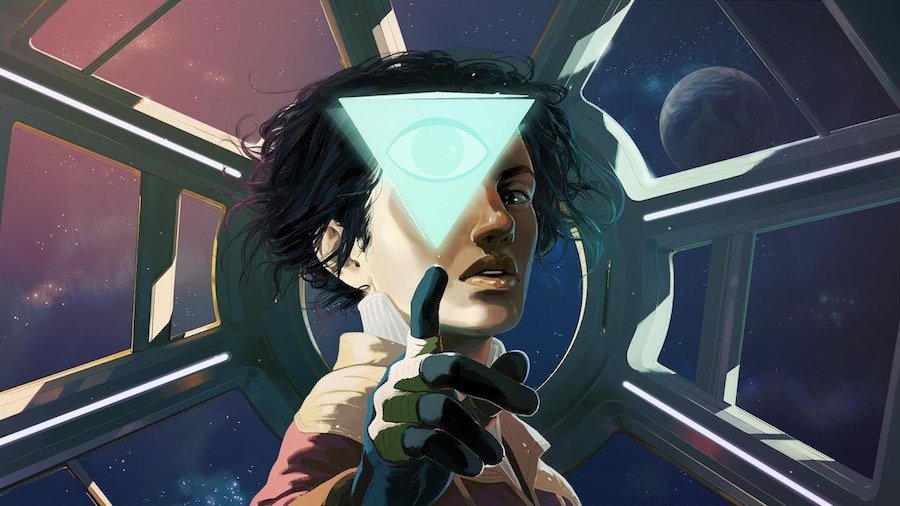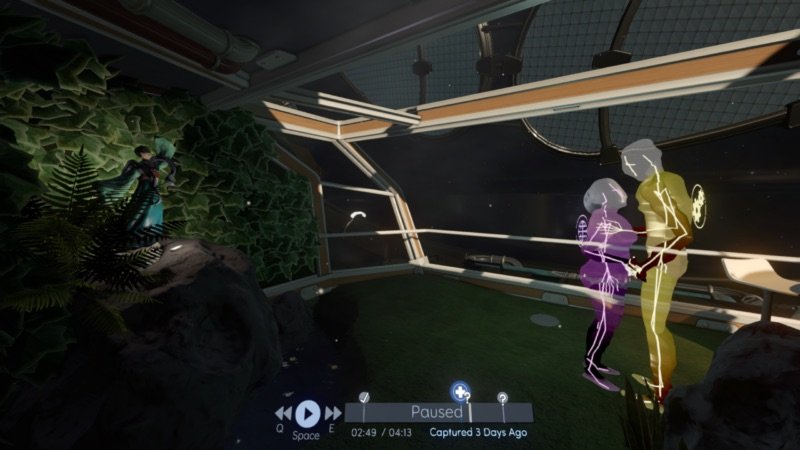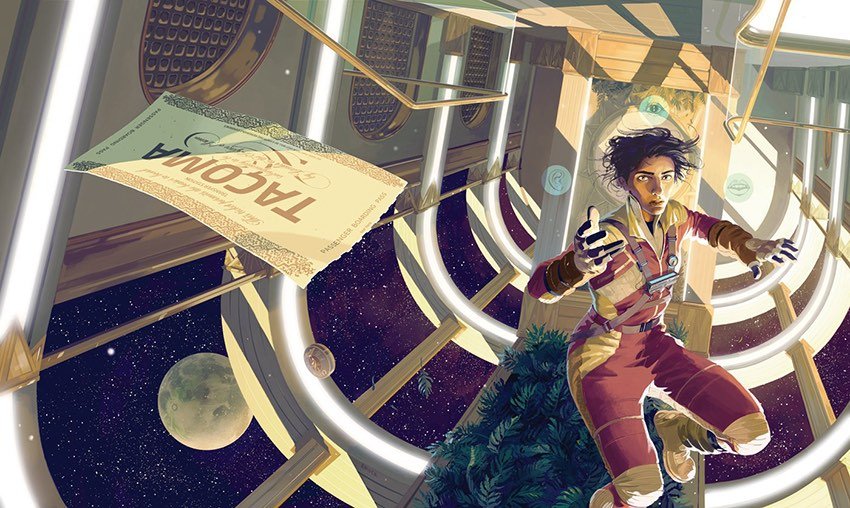Tacoma Is Definitely A Video Game

If Tacoma, the new game from Fullbright, had come out ten years ago, it would have engendered three hot takes on the Internet. As someone who lived through the past decade, I can enumerate these possible opinions with perfect accuracy.
- Tacoma does not feature running, jumping, or shooting people/monsters in the face, and is about two hours long. Therefore, Tacoma is not a video game.
- Tacoma does not feature running, jumping, or shooting people/monsters in the face, and is about two hours long. Therefore, Tacoma proves conclusively that games can be art.
- Tacoma does not feature running, jumping, or shooting people/monsters in the face, and is about two hours long. Therefore, Tacoma is not worth its $20 price.
It's 2017, and I have played Tacoma. Here’s what we know:
- Tacoma is a video game.
- Tacoma is art.
- Tacoma is too expensive.
Let's talk about it.
Games
Tacoma casts players as an astronaut on a mission to recover the artificial intelligence unit lodged inside a damaged spacecraft. The derelict ship is called the Tacoma, and it was abandoned about three days before our hero’s arrival. When you arrive on the Tacoma, it’s not clear why the crew is gone and the particulars of your mission are mysterious. Your character immediately receives a device that allows them to see three-dimensional projected images in the environment. The AI you’re tasked with salvaging can communicate with you through these projections, and events that transpired on the ship prior to your arrival have been recorded as a sort of 3D home movie. To play the game, you move from one part of the spacecraft to another, and in each area you can watch a small slice of the original crew’s life.
During each of these vignettes, the ship’s crew members move throughout the ship and interact with one another, so you’ll rarely be able to see the entirety of a scene while standing in one place. Because you have the ability to pause, rewind and fast-forward every sequence, you can repeatedly view scenarios from different characters’ perspectives. You’re also able to read each crew member’s text messages and emails at set points in the story, and these details provide context for their actions in other scenes. Eventually, you figure out why the crew isn’t there to welcome you when you arrive.
When games like Tacoma first started coming out earlier this decade, people routinely derided them for not being games. These narrative-focused experiences that didn’t feature combat or intricate puzzles couldn’t be games, some people reasoned; after all, you couldn’t even die. I could say that time has proven these individuals wrong, but that would be silly, because they’ve been wrong from the start. While walking from place to place and unspooling a story might not provide white-knuckle thrills, it doesn’t prevent something from being a video game at all. Games like Gone Home 2013, Fullbright’s previous title, which shares a lot of its DNA with Tacoma are basically archetypal video games. While they don’t assign a score to your every move, they provide the opportunity to unearth a story at your own pace, which is a unique sensation that video games are well-equipped to provide. Tacoma and Gone Home address games’ inherent traits in an interesting way. Sadly, Tacoma doesn’t do so very well.
Too often, Tacoma feels like a checklist. In certain sections of the game, you are presented with a literal checklist; the video sequences mentioned above highlight moments when a particularly meaningful event is happening to one of the characters. The highlight is always color-coded to the specific crew member who is pushing the narrative along at that moment, and when you finally recover their snippet of the story, that spot on the video’s timeline is marked with a check. Once you’ve checked off all the marks on an area’s video, you’re allowed to proceed to the next section. I like watching movies, and I like finding clues, but I don’t like doing chores. Checklists have a nasty tendency to make a task feel chorelike, and I felt the game’s insistence that I find certain clues sapped all the joy from discovering them. Even when details of the plot were interesting, the way in which I found them didn’t feel organic. These interactions are meant to humanize the characters, but too often the experience simply revealed that these people were just conduits for the story. Shuffling through someone’s personal messages and conversations should feel strange and intimate. In Tacoma it too often feels like busywork.

Art
A strange thing happened when certain people started saying titles like Gone Home weren’t video games: Another group started saying these experiences were not only games, but proof that games could be ‘art’. There’s been a longstanding debate about whether or not video games can be art. We at Zero Stars believe all video games are the product of a human effort to make other people feel something, a definition that also applies to everything in every museum and theater on Earth. Other people disagree, including Roger Ebert, a man who wrote very eloquently about movies and very poorly about video games.
People who say games like Gone Home and Tacoma prove games can be art are caving to arguments made by a person who dedicated his life to one art form and then felt it necessary to demean others. These games superficially resemble films, and they admittedly deal with themes that are more complex than those found in most action titles, but the truth is that their worst parts are the most filmic. Gone Home was wonderful because it offered the thrill of exploring someone else’s home. As a bonus, the developer managed to lay a terrific story on top of that foundation. The exploration, however, was up to the player, and the game allowed the story to unfold as you found new things. Tacoma features a similarly well-realized environment, but gates your progress through it so strictly and pushes forward progress so intensely that it discourages the quiet exploration a game can promote. I left Gone Home feeling like I had been a participant in a story. I left Tacoma feeling like someone had told me about a series of events.

Commerce
Normally, I don’t critique games for how much they cost or their length, but Tacoma left me feeling dissatisfied. The game is not too short; though Tacoma rushes through many of its story beats, I’d imagine that I completed it and Gone Home in similar amounts of time. There’s something about the patterns of Tacoma’s narrative that makes it feel like the checklists that inhabit all of its small story sections apply to the overarching story as well. There are six crew members aboard the craft, and the game quickly falls into a cycle where you view a longer story sequence that involves all of the cast and then encounter one of the crew members in a separate, quieter moment.
As the game wears on, the consistency of this pattern makes it harder to focus on the carefully constructed environments and characters. It feels as if the people creating the story had their own checklist, and followed it to a degree that blunted the overall impact. Because the sequence of events becomes predictable, it’s difficult to appreciate each moment as special and surprising. Everything becomes another stop on the journey to the end of the story, rather than an exciting detour that makes the overall experience richer.
Twenty dollars is both a lot of money and very little. Spending that cash is unlikely to bankrupt you, but there are many games vying for your twenty these days. With that in mind, there’s plenty to recommend this game; the voice work is uniformly excellent, the environments are immensely detailed, and the story is engaging enough. Parts of Tacoma feint toward greatness, but mostly it’s just a decently told story that happens to be a video game. There are better games to drop your cash on.
I’m glad that we’re beyond arguing about whether games and art are incompatible, because Tacoma is a video game, which means it’s a work of art.
Truth is, some pieces of art are just okay. ★